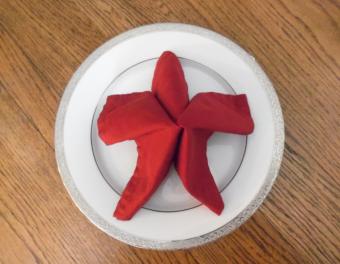
What is generally known as origami rice paper is actually not "rice" at all. Rather, it's a versatile paper made from mulberry plant fibers. It's also known as kozo or kozogami.
Origami Rice Paper Is Mulberry Paper
The term "rice paper" in origami is a misnomer, but one with an interesting explanation that's good for trivia: Origami rice paper got its name because the paper was often used to make packets of rice. Hence, the term "rice paper."
Japanese Paper
The handmade Japanese paper used in origami and other paper crafts is known as "washi," which translates to "Japanese paper." Within washi, there are a number of types, defined by texture, weight and purpose. The one that origami users concern themselves with is the one made from mulberry: kozogami.
Family Tradition: Making Kozo
Made from paper mulberry (Brousssonetia papyrifera), kozogami is the most widely made type of washi. In fact, 90% of all washi is kozo. With its inherent toughness, kozo is used for a number of purposes, including origami, screens, and book conservation. In origami, the paper is prized for its unique presentation. No two pieces of washi are alike, as fibers remain visible, adding character to every sheet.
The papermaking process for washi is the same regardless of plant source. Handmade, this ancient tradition is still practiced in Japan; although machine-made papers have dwindled the number of families making washi to fewer than 350.
For these families, the process is as follows:
- Branches are harvested in the fall for the winter. The cold protects the fibers.
- The branches are cut, steamed and stripped; the bark removed. The inner bark is reserved for the finest paper.
- The bark is cleaned and cooked, softening the fiber to separate.
- After rinsing, the bark is laid out on a table for pounding and stretching.
- The pounded fiber is added to a liquid solution, forming a paste.
- This paste is spread out over a bamboo mesh screen to form the individual sheets.
- The sheets are piled on top of one another as they are formed.
- The sheets are dried. The result is washi. From the paper mulberry tree, the result is kozogami.
- To see this process done, visit YouTube for a video picking up the process at the time of Step #6.
In addition to kozo, the two other popular washi sources are mitsumata and gampi. While kozo is regarded as the masculine element, mitsumata is the feminine counterpart. It is often used for calligraphy. Gampi is the elder of all three and is primarily used for books. As a group, the defining characteristics of washi are:
- Strong
- Durable, but delicate
- Flexible
- Absorbent
- Low acidity
Folding with Kozogami
Strong and thick, folding with washi paper is quite different then folding with kami, which is made from wood pulp. While models turn out beautiful using washi, there is a challenge in folding some of the tighter folds. However, with practice, manipulation of the paper does get easier.
Chiyogami
Chiyogami, better known as "yuzen" in the United States, is kozogami silk-screened with traditional Japanese designs. First developed in the Edo period, today the designs remain popular with origami folders, due to their striking presentation and reasonable cost.
In addition to origami folders, other groups who use washi in their work include:
- Bookbinders, conservators
- Craftspeople
- Graphic designers
- Interior designers
- Stationery makers
- Artists, decorators
- Calligraphers
Where to Purchase Washi
To purchase origami rice paper, try specialty stores and the Internet. Retailers with online stores provide the perfect venue to review designs and compare prices. The following websites can get you started:
- Paper Jade: A large array of paper, including delicate, translucent papers featuring natural and abstract designs
- Washi Accents: Choose from chiyogami and "traditional colors of Japan" (solid colors)
- Amazon.com, Washi Paper: A list of washi papers and books about paper crafts
- JUN Japanese Gifts & Souvenirs: Origami papers in a variety of textures and quantities with packets as small as five sheets available







